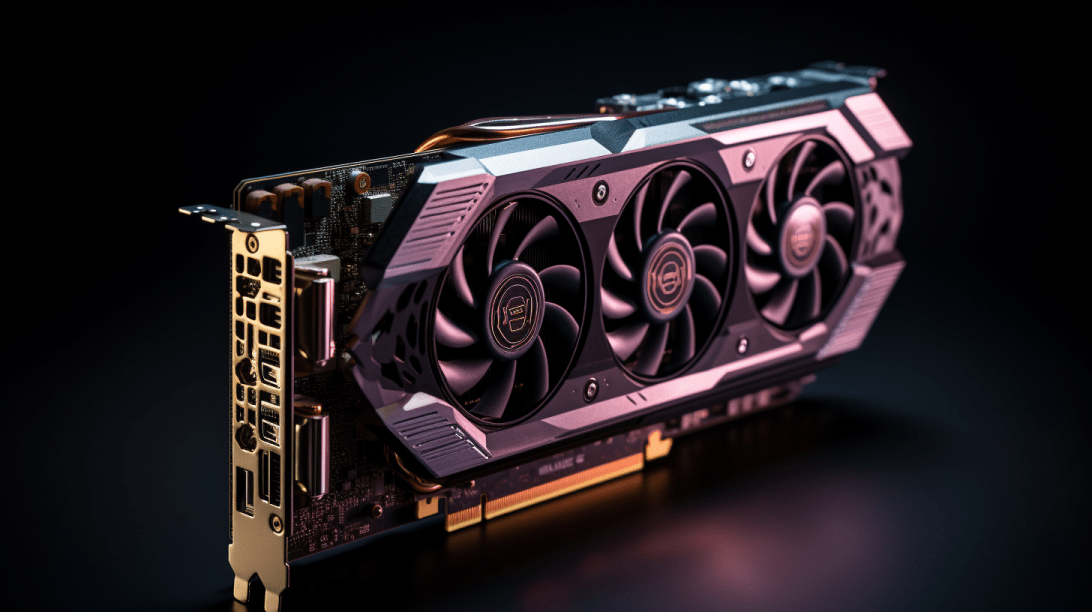Photo was created by Webthat using MidJourney
In the fast-paced world of technology, where innovation drives progress and the boundaries of possibility are relentlessly pushed, a critical chase is underway. It’s not a chase for the next groundbreaking app or revolutionary device; it’s a hunt for something less conspicuous but utterly indispensable: Graphics Processing Units, or GPUs. These tiny chips have become the beating heart of the artificial intelligence (A.I.) revolution, and startups, investors, and tech giants alike are going to extraordinary lengths to secure them.
The Frenzy for the A.I. Powerhouse
For the past year, the CEO of Docugami, Jean Paoli, has been on a relentless quest. His goal? To secure GPUs, the driving force behind A.I. breakthroughs. These chips, specifically designed for graphics processing, are now the lifeblood of cutting-edge A.I. companies. They’re the workhorses that crunch vast amounts of data, enabling A.I. to shine in all its glory.
Mr. Paoli’s efforts to acquire GPUs are nothing short of remarkable. He’s tapped into his industry network, applied for government grants, and even resorted to creative solutions like repurposing old gaming chips. It’s the type of determination reminiscent of prospectors hunting for rare metals in a gold rush.
Related Reading: The Sodium Solution: A Promising US Startup Revolutionizes Energy Storage
More Precious than Gold
The scarcity of GPUs has turned them into the “rare earth metals” of the tech world, as Jean Paoli aptly describes. More coveted than the latest gadgets or hefty profits, GPUs have triggered a scramble among tech companies of all sizes. This frenzied pursuit can be traced back to the surge of excitement over A.I., with innovations like ChatGPT fueling the fire.
Nvidia, a dominant player in the GPU market, holds a virtual monopoly, intensifying the shortage. This tech behemoth, now valued at a staggering $1 trillion, can hardly keep up with the overwhelming demand. The result? Start-ups and investors find themselves grappling with a significant bottleneck that could potentially stunt the growth of generative A.I. businesses.
The Waiting Game
In the world of technology, time is of the essence. Yet, when it comes to securing Graphics Processing Units, even the giants face an unusual hurdle. Cloud computing services, like those provided by Google, Microsoft, and Amazon, have become a lifeline for A.I. companies. However, soaring demand has led to long waiting lists, some stretching close to a year. It’s a roadblock that goes against the very essence of technological innovation—opportunity and expansion.
While tech giants can leverage their clout for more accessible GPU access, start-ups and researchers are caught in a dilemma. Their desperation has led to creative tactics, from technical advice sharing on social media to pooling resources to buy and share GPU clusters. It’s an all-out effort to overcome the scarcity and move forward in a landscape teeming with potential.
Related Reading: Elon Musk’s Recent Purchase of 10,000 GPUs for Twitter’s In-House AI Project
A Lifeline for the Desperate
For entrepreneurs like Eric Jonas, the situation is dire. Setting out to establish an A.I. drug discovery company, he quickly realized that the scarcity of Graphics Processing Units affected both academia and the start-up world. It’s a challenging landscape where even undesirable options, like using outdated chips or setting up personal data centers, are considered.
Evan Conrad and Alex Gajewski recognized the need to bridge this gap. They founded the San Francisco Compute Group, a project aimed at allowing researchers and start-ups to access GPUs in smaller amounts. Their endeavor received viral attention, showcasing the palpable demand for computing power.
A Beacon of Hope
Amidst the chaos, glimmers of hope emerge. Index Ventures partnered with Oracle to provide a mix of GPUs to its portfolio companies. This initiative seeks to level the playing field for start-ups, offering them the tools they need to experiment without the burden of large, long-term commitments.
The A.I. revolution is a journey marked by its challenges and triumphs. From GPUs being likened to rare gems to the unrelenting pursuit of technological progress, the race for A.I. supremacy continues. In a landscape where compute power is both the currency and the gateway to innovation, the quest for GPUs stands as a testament to human ingenuity and determination.
Related Reading: OpenAI’s Potential Bankruptcy: Unveiling the Future of ChatGPT
Final Thoughts
In a world hungry for technological advancement, Graphics Processing Units have emerged as the linchpin of the A.I. revolution. The race to secure these critical components is a saga of perseverance, creativity, and determination. From CEOs to start-up founders, the hunt for GPUs mirrors a modern-day gold rush, where the rewards are not nuggets but the power to reshape industries. As technology continues to evolve, one thing remains clear: the desperate quest for A.I.’s most indispensable prize, the humble GPU, is far from over.


